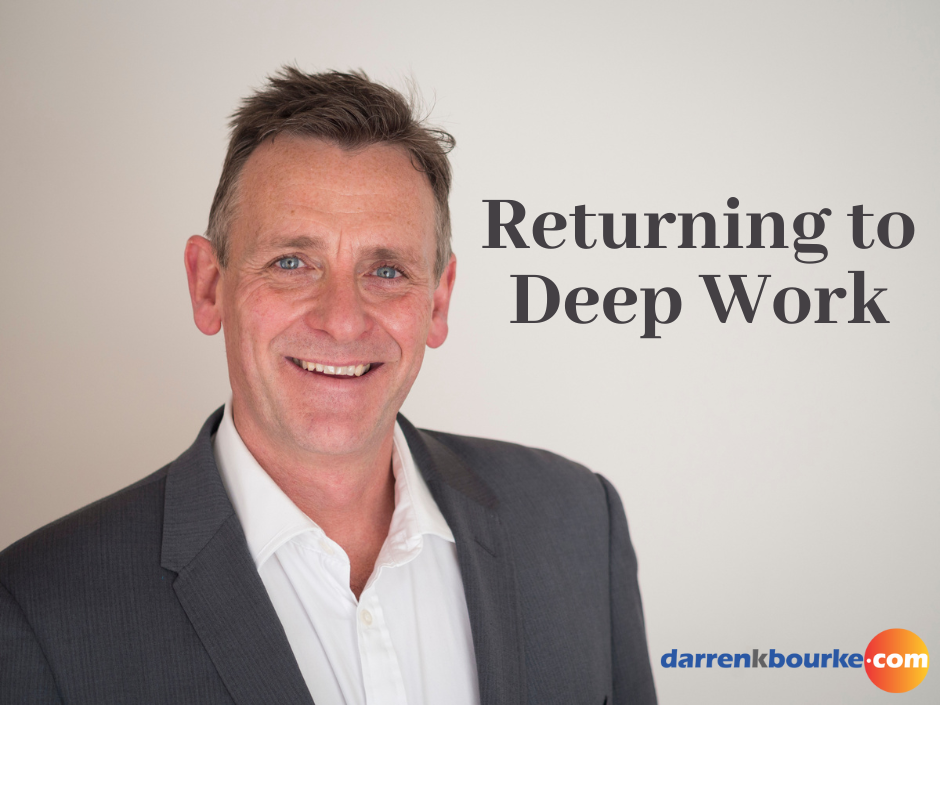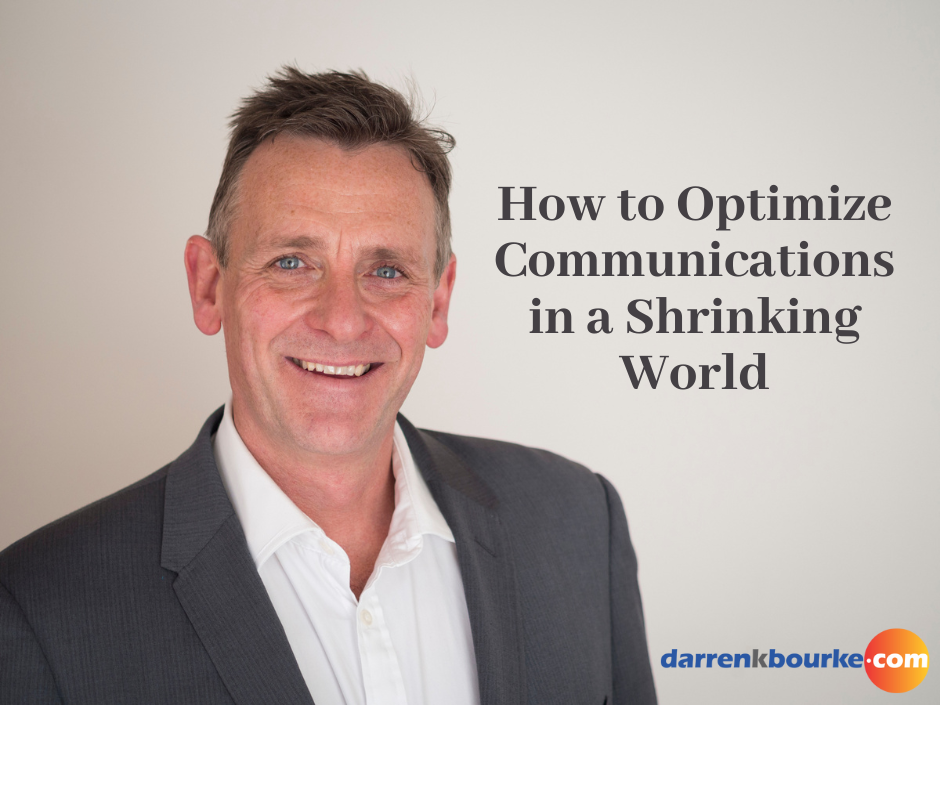
Finding your flow state might just be the Holy Grail for entrepreneurs.
A flow state can also be described as ‘in the zone’.
In flow, you are immersed in activity.
Your thoughts flow easily and have clarity of mind.
Your intense effortless focus is unbroken.
Time flies.
Flow is joyful and rewarding.
Yet it often seems impossible to access and fleeting.
We are all inspired to find our flow state.
Flow unlocks our core genius – our best work.
To understand how to access our flow state, it is worth considering the three stages of flow.
Content creation challenges us.
Regardless of background, most business owners struggle to consistently produce high quality content.
Blogs, videos and social media posts must be drafted.
Books, articles and white papers must be written.
Talks and presentations need to be crafted,
But we always have blocks to creating content.
We wait for the muse to visit, the inspiration to come.
The deadline is looming.
As we wait for inspiration.
Our desk fills up with empty coffee cups.
The page is blank in front of us.
The cursor blinks on the laptop screen.
And then…. Nothing.
I am an advocate of Walking Meetings.
We should do more of them.
Walking Meetings are best scheduled in a sprawling park or garden,
I meet one of key clients monthly at a park with our dogs.
And something wonderful usually happens.
Designing the lifestyle you want to live, starts with thought.
In this blog, I explore some key tactics in Lifestyle Design to put you at the forefront of success.
With the new financial year ahead of us, our thinking turns to updating our strategy.
In this blog, I highlight the key areas to review in your business to make this year a winning one.
While everyone can give criticism, not all criticism is created equal or valid.
In this blog, I share a valuable lesson on moderating criticism from others.
Momentum is a true force. It seems to take forever to establish, but can be lost in a moment.
In this blog, I explore the power of momentum as your greatest ally and how to maintain it in a complex world.
Some time ago I was introduced to Cal Newport’s excellent book Deep Work.
In this blog, I discuss why it is so important to commit and execute your ‘Deep Work’. Your Deep Work is your greatest contribution to the universe and you must fulfil this obligation.
Despite the Paramount importance of Deep Work, one of the greatest challenges is the ability to schedule and execute Deep Work.
With a big ‘hat tip’ to the excellent author & speaker Simon Sinek, this attribution from him is both insightful and brilliant.
In this blog, I want to challenge conventional thinking around hubris, humility and life-long learning.
Why do young children so openly and willingly admit when they don’t know something?
Something happens to us as teenagers and young adults, where we become reluctant to volunteer when we don’t know something.
It gets drilled out of us.
Beyond these formative years, the unwillingness to admit we don’t know something often becomes a default position in conversations, meetings and interpersonal interactions.
Understanding different modes of communication between genders can assist in optimizing relationships.
It’s been observed that one of the key differences in gender-based communication is that ‘Women want to feel’ and ‘Men want to fix’.
Before I get accused of stereotypical behaviour, this is recognized as a key differential in communication modes between genders.
I’ve personally seen first-hand how I can quickly default to ‘fix’ mode when discussing issues with my wife and daughter.
Since my attention was drawn to this, I have observed this play out often in conversations between genders.
In this blog, I want to explore what we can all learn in being aware of this.
Most people know what they want.
The challenge is they don’t know how to get it.
In this blog, I want to share my hacks, tactics and tools on how to avoid the pitfalls of failing to execute.
But before you execute, you need a plan.
Business owners often overlook how empowered they are in setting their agenda.
Most business owners claim to be a victim of poor diary management. This results in their priorities being constantly ignored or deferred.
I am passionate about taking control of Diary Architecture.
Architecture is a useful term to introduce here as it relates to the art and science of construction. It is the style of design and method of construction.
In this blog, I will explore how to adopt a Diary Architecture that puts you in control and makes your priorities paramount.
Regardless of which industry our businesses operate within, invariably business owners want to talk about improving their people skills.
I often say to business owners that we don’t do business with other businesses - we do business with people.
Understanding people and cultivating winning relationships is paramount.
In this blog, I want to expand on the different personas that exist within every business. Customers, Employees and Suppliers are all key cohorts of people that we need to build relationships with.
Let’s look at the personas within these three groups.
Later in 2024, Australia will introduce legislation (amendment to the Fair Work Act) around employees having the right to disconnect from their employment outside of normal working hours.
This will grant employees the right to refuse to respond, monitor or engage with any work-related communications from their employers or third parties outside of working hours. Should an employee refuse, an employer may not instigate any negative consequences upon the employee.
I’ll leave brighter legal minds to provide detailed commentary on the specifics of the legislation.
However, I see this ‘Right To Disconnect’ (RTD) legislation as a solution to a problem we don’t need.
Most of us are aware that high-achievers typically have their own set of daily Morning Routines.
These are typically a range of activities and steps attended to prior to commencing your workday.
I have always been fascinated by Morning Routines.
Looking back, the first time I set up my Morning Routine, I had a range of themes and tactics offered by many.
Let’s call them Morning Routines 1.0
During Covid lockdowns, the workplace changed. For most employees, the traditional 9-5 Monday to Friday week was turned on its head as employees worked from home.
Post pandemic, the workplace remained changed forever. For most employees, the working week was a hybrid model of a combination of days working between the office and home. Some employees continue to work exclusively 5 days a week working from home (WFH).
Much commentary has been written on the various pros and cons of this ‘once in a century’ game-changer.
Many commentators suggested that this would be a huge win for employees with no reduction in productivity. In fact, it has even been suggested that productivity would increase.
Throughout all of this, I have remained sceptical.
In Part 2 of this 2-Part Blog, I outline the critical quantitative areas to review at the half-year mark.
You will recall In Part 1 we reviewed the ‘Qualitative’ areas.
So now let’s look at the quantitative areas in conducting your mid-year review.
We are half-way through the financial year.
How are you, your team and your business tracking against plan and budget?
It is critical that you check in now and conduct a mid-year review. Are you in front, on par or behind your expectations for the year so far?
In this 2-Part Blog, I outline the critical areas to review at the half-year mark. While monthly and quarterly progress must be monitored, the mid-year review is the key milestone before hitting the end of the financial year.
In Part 1 I will outline the ‘Qualitative’ areas to review, and next time in Part 2, I will pivot to the ‘Quantitative’ factors.
So let’s get started on considering the qualitative areas to consider in conducting a mid-year review.
I recently heard a way of thinking I hadn’t heard of before.
Explore versus Exploit.
In this blog, I will workshop scenarios around whether we ‘explore’ an activity or whether we ‘exploit’ an activity.
Prior to the pandemic, an ever-shrinking world was evolving behind the digital curtain. Phone conversations were replaced by texts, while texts were replaced by likes and emojis.
Post-pandemic we saw this accelerate through Zoom meetings and virtual relationships. Working from home created even greater separation within our traditional workplaces.
So many people from all walks of life have commented to me on the reduction, or even absence of human connection. Social catch ups, work meetings, business development meetings and general interaction in person have dramatically reduced.
It got me thinking on how we stay connected.
Us humans fundamentally are herd animals.
How do we stay connected in an ever-increasing virtual world?
In Part 2 of this blog, I’ll share with you more six more compelling hacks and tactics to make this year in a business more enjoyable, productive, profitable, and sustainable.
In this 2-Part blog, I’ll share with you compelling hacks and tactics to make this year in a business more enjoyable, productive, profitable, and sustainable.
Let’s go.
Recently I have commentated on mental health and burnout in relation to business-owners and their teams.
Overwork is where an employee works beyond their capacity. This may be voluntarily, implicitly (through cultural expectations) or explicitly (requested). Overwork blurs the line between working hours and private hours.
Overwork typically presents as significantly extended working hours over a working week. This can include bleeding into day and night as well as 7-day working weeks. Symptoms of employees suffering overwork can be exhaustion, stress, depression, anxiety, sleep disorders, poor diet, extreme behaviour, infidelity, drug and alcohol abuse. Overall, overwork leads to a loss of self, personal relationships, hobbies and interests.
In extreme cases, overwork has led to death as strung-out workers can’t keep pace with the expectations of perceived work deliverables.
In this blog, I explore the issue of overwork which has presented itself in a new form within post-Covid virtual and hybrid workplaces.
One of the challenges private business owners face, is how to tackle their pricing. This heightens in the inflationary environment we now face.
The starting point for a sound pricing strategy is to review your pricing annually.
In this blog, I share some key insights on the ways in which I optimize pricing for my clients.
Some of you may know I am a big fan of taking regular retreats to review my life on both a personal and business level. These are generally solo trips for a night or two to an idyllic seaside or bush environment.
I also adopt slow productivity in my work which focuses on economically expending energy in a mindful and purposeful manner. It’s about seeing life as a series of short sprints rather than one long marathon.
In this blog, I share some valuable insights on the power of retreats and adopting slow productivity into you game plan.
We face significant global and domestic issues in this post-pandemic business landscape.
Please understand me highlighting these issues is not intended to be pessimistic or negative. I simply prefer to be realistic in surveying the horizon to observe what is coming at us, before it’s too late.
In this blog, I identify the big challenges I see facing business owners and their teams in the year ahead.
In Part 2 of this two-part Blog, I continue to explore how the balance of power in business has shifted from employer to employee post-pandemic.
In Part 1, I outlined the changes and factors leading to the balance of power shifting.
Now in Part 2, I workshop some practical areas business owners (employers) should focus on to combat this shift in the balance of power.
In this two-part Blog, I discuss how the balance of power in business has shifted from employer to employee post-pandemic. In Part 1, I outline the changes and factors leading to the balance of power shifting. In Part 2, I workshop what business owners (employers) can do to tackle this shift in the balance of power.
Prior to the pandemic, employers had held the balance of power over employees. There had been no real wages growth for 8-10 years and Australia was close to full employment.
During the pandemic, and post-pandemic, there were emerging factors that have led to there being a shift in the balance of power.
Now employees have their hand on the tiller and are controlling the agenda.
Mental health has become one of the greatest challenges we face in society.
In this blog, I share many of the insights I’ve observed in working with literally hundreds of business owners.
A caveat here is key. I am not a clinical professional in this area so I will not be presenting clinical advice as a ‘bush doctor’.
My aim is to share observational feedback in working for decades with business owners in their inner sanctum. Here I share some practical tactics and strategies I’ve seen business owners benefit from, when faced with mental health issues.
There is an indelible connection between mental health and business health.
Business owners constantly say they want change.
But how does change occur?
The answer is friction.
Friction precedes change.






























